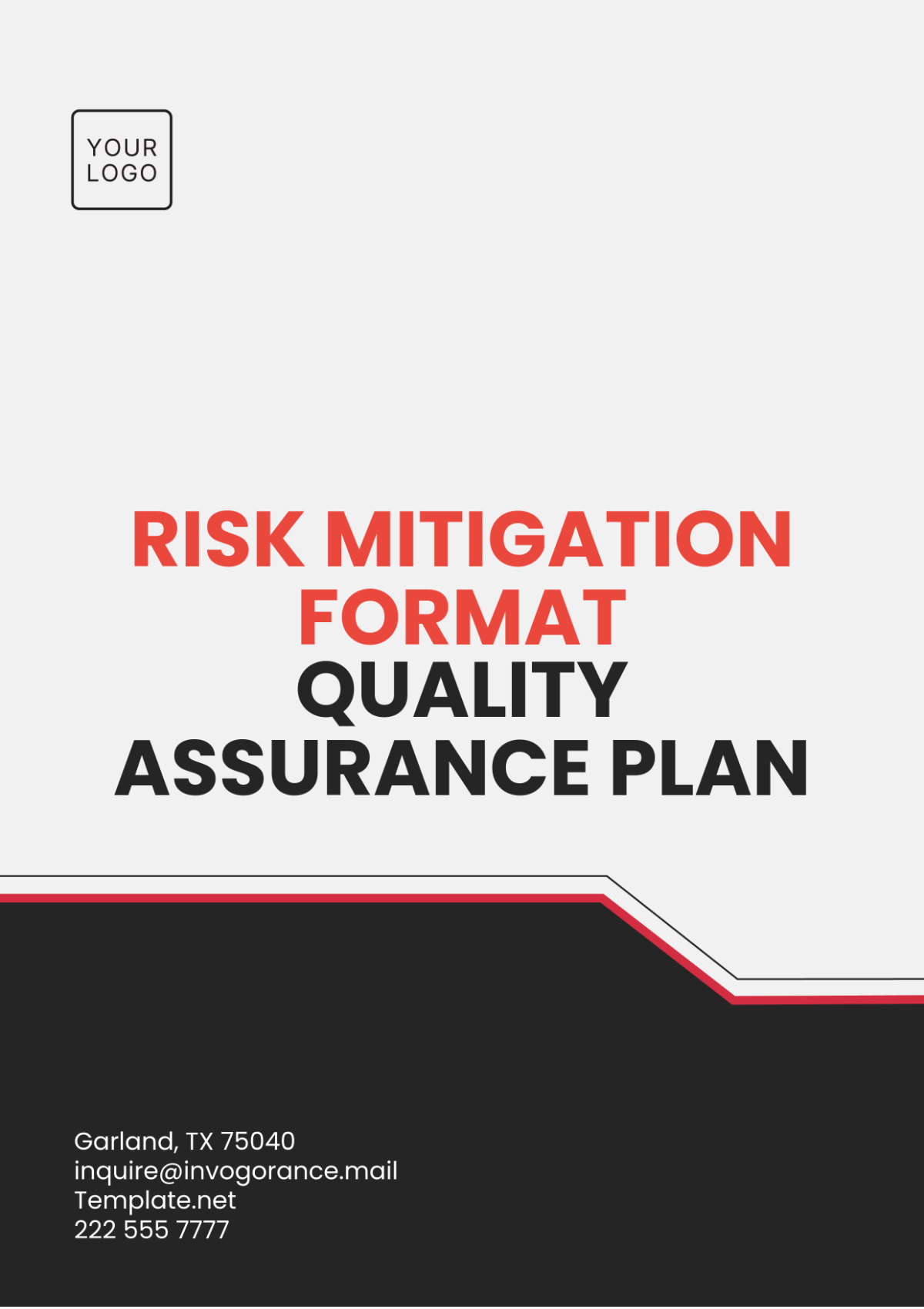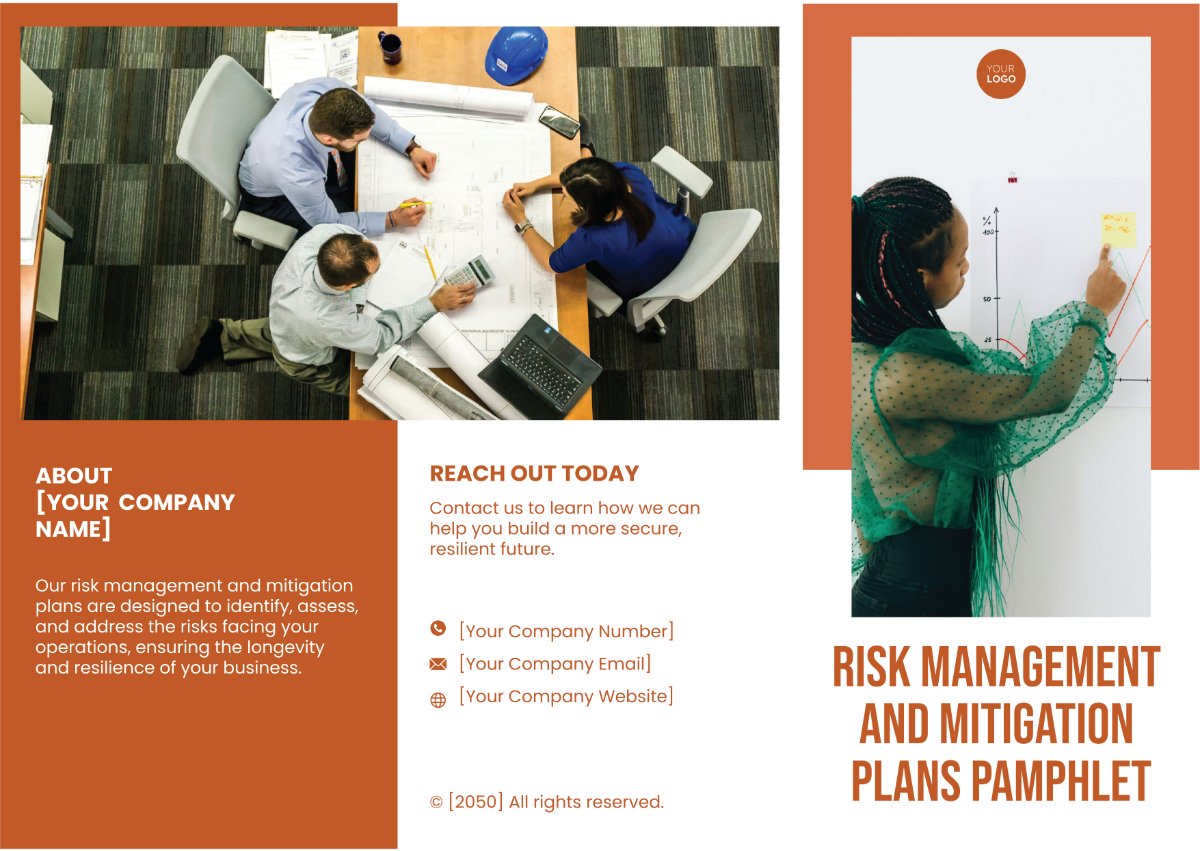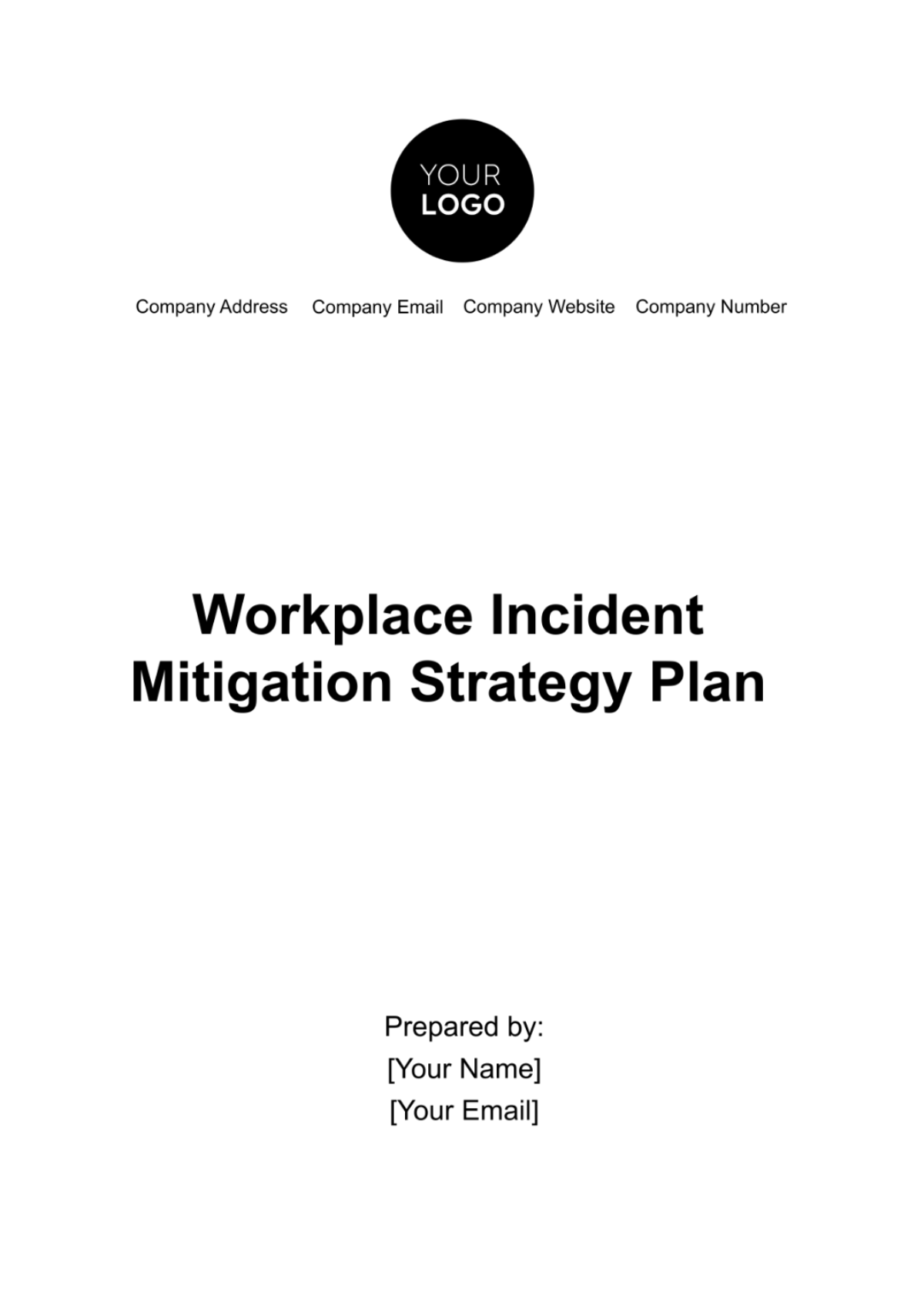Risk Mitigation Format Quality Assurance Plan
Prepared by:
[Your Name]
[Your Company Name]
1. Project Overview
Project Name: Development of Customer Relationship Management (CRM) System
Project Description: This project aims to develop a CRM system to enhance customer interactions, streamline processes, and improve data management for better decision-making.
Project Manager: [Your Name]
Date: January 1, 2050, to December 31, 2050
2. Objectives
Identify and evaluate potential risks that may impact project quality and success.
Establish clear mitigation strategies to address identified risks.
Ensure that all quality assurance measures are implemented throughout the project lifecycle.
3. Risk Identification and Assessment
Risk ID | Risk Description | Category | Risk Score (Impact × Likelihood) | Risk Owner |
|---|---|---|---|---|
R1 | Inadequate user requirements leading to scope creep | Technical | 12 | Business Analyst |
R2 | Delays in software development due to resource constraints | Process | 16 | Development Lead |
R3 | Changes in regulatory requirements | External | 9 | Legal Department |
R4 | Data security breaches | Technical | 15 | IT Security Officer |
4. Mitigation Strategies
Risk ID | Mitigation Strategy | Responsible Party | Timeline | Status |
|---|---|---|---|---|
R1 | Conduct thorough requirements-gathering sessions with stakeholders to finalize the scope. | Business Analyst | January 2050 | Planned |
R2 | Allocate additional resources and schedule regular progress reviews to identify delays early. | Development Lead | Ongoing throughout 2050 | In Progress |
R3 | Regularly review regulations affecting the project and adapt project plans accordingly. | Legal Department | Quarterly reviews | Planned |
R4 | Implement robust security measures, including data encryption and regular security audits. | IT Security Officer | Ongoing throughout 2050 | Planned |
5. Quality Assurance Procedures
5.1 Quality Control Measures
Quality Reviews: Conduct quality reviews at key project milestones (e.g., design, development, and testing) to ensure adherence to project specifications.
Testing Protocols: Implement comprehensive testing protocols, including unit testing, integration testing, and user acceptance testing (UAT), to validate project deliverables.
5.2 Documentation and Standards
Maintain detailed documentation of all project activities, including requirements, design specifications, testing results, and lessons learned.
Adhere to industry standards such as ISO 9001 to ensure high-quality deliverables.
6. Monitoring and Reporting
Risk Monitoring: Establish a monitoring process to regularly review the status of identified risks. This will include tracking the effectiveness of mitigation strategies and updating risk assessments as necessary.
Progress Reports: Generate monthly progress reports to summarize risk management activities and quality assurance efforts, distributing them to all stakeholders.
Review Meetings: Hold bi-weekly review meetings to discuss the status of risks, the implementation of mitigation strategies, and any changes needed to the quality assurance approach.
7. Training and Awareness
Conduct training sessions for project team members on risk management and quality assurance practices to ensure everyone understands their roles and responsibilities.
8. Conclusion
This Risk Mitigation Format Quality Assurance Plan provides a structured approach to managing risks and ensuring quality in the Development of the CRM System project. By following this plan, the project team can proactively identify, assess, and mitigate risks while maintaining high-quality standards throughout the project lifecycle.


